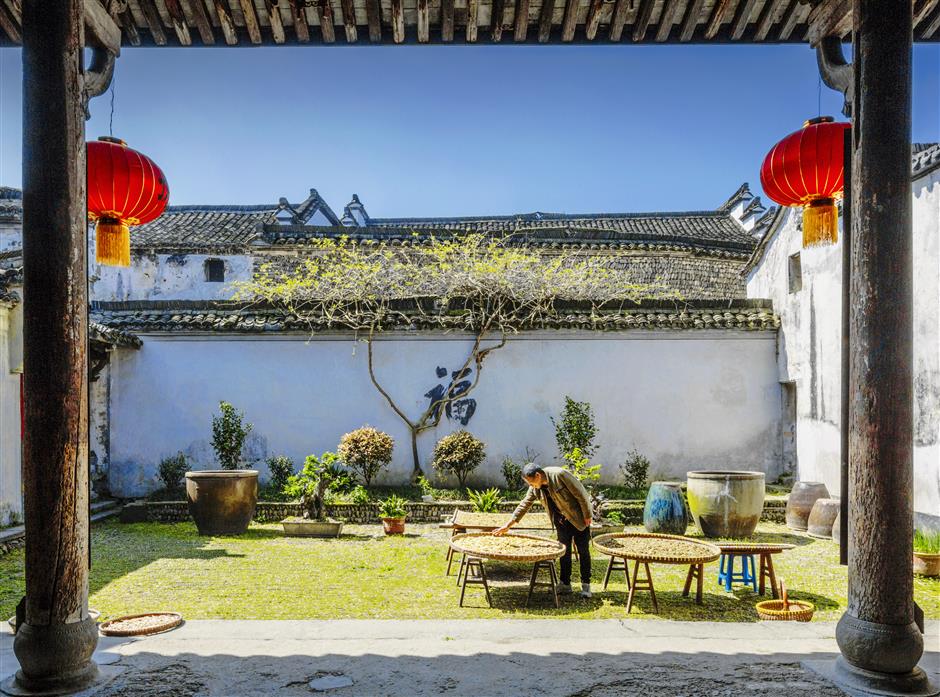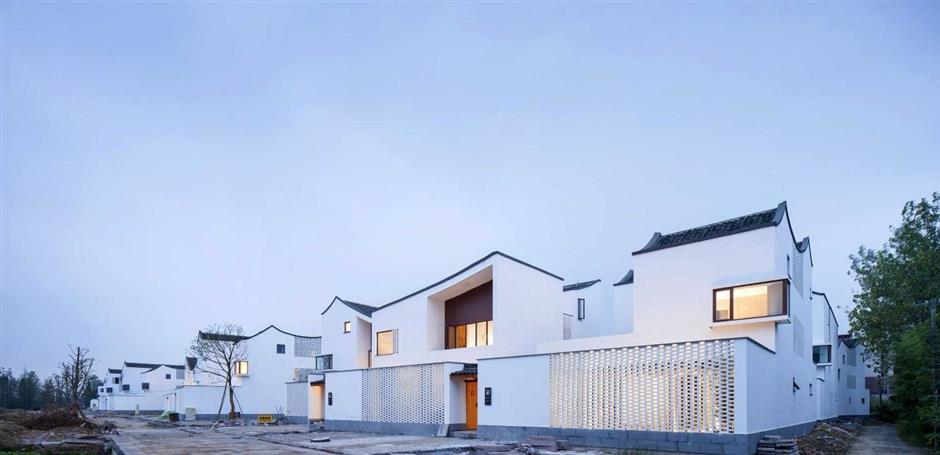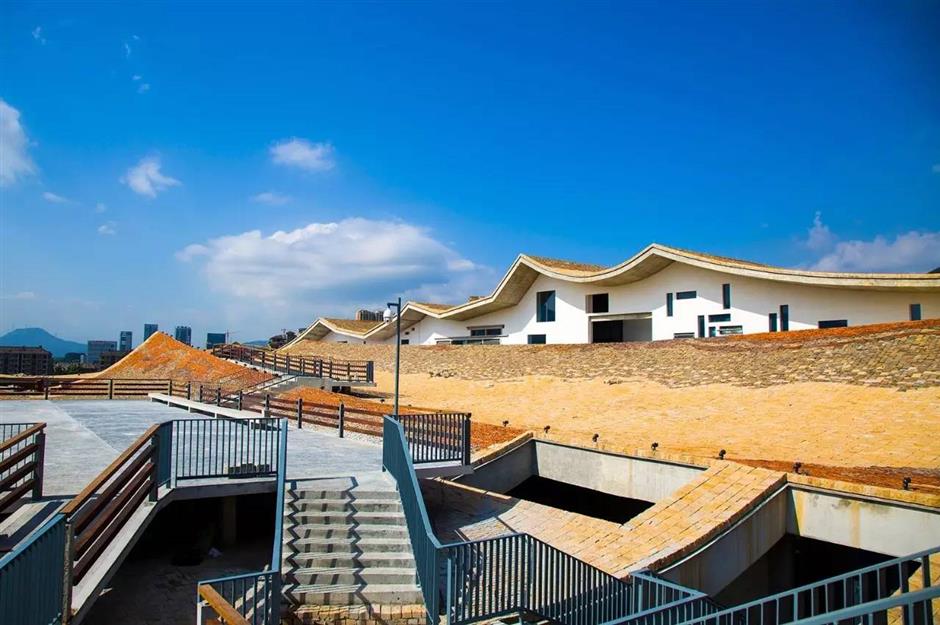Sea of color to flood First Flowers Festival

Sunflower in Fuyang
The much-anticipated Fuyang First Flower Festival, to be held at Longmen Ancient Town, promises to be a glittering spectacle of color.
The festival, which kicks off tomorrow, will open a window on modern Fuchun Mountain dwelling and reveal the results of how rural China has been revitalized.
The flower show, presented by 24 towns and villages of Fuyang, will be exhibited in several stages in Longmen Ancient Town. The fields, streets, gardens and halls will then all be flooded in a sea of flowers.
The district government is to release a guide mapping out all important flower appreciation spots in Longmen.
Plans include a 3-kilometer bike lane in Lishan Town, 33-hectare peach blossoms in Wanshi Town, eye-dazzling azaleas in the mountains of Dongqiao Town and the spectacular rice fields, while thalia dealbata, sunflowers and lotus ponds will stretch along the S19 Expressway.
Activities planned as part of the celebration include a photography contest, a painting and calligraphy exhibition, a bonsai display, a banquet and music festival.

Eye-dazzling azaleas in the mountains of Fuyang
The local government has also encouraged residents to grow flowers in their own gardens and backyards. A competition is to be launched to find the best gardeners in Fuyang and the winners will be offered floriculture training courses.
The event is part of this year’s Gongwang Fuchun Cultural Festival, which aims to promote the area as the last residence of the great Yuan Dynasty (1279-1368) painter Huang Gongwang.
Lying in the southwestern corner of Hangzhou, Fuyang was known as Fuchun originally but its name was changed in AD 394 by Emperor Jianwen of the Eastern Jin Dynasty (AD 317-420).
The Fuchun River, a tributary of the Qiantang River, flows through the area and is flanked by the Tianmu Mountain range to the north and the Xianxialing Mountain to the south.
Miaoshanwu, a valley in the local Miaoshan Mountain, is said to be the place where Huang spent his last years in seclusion. He finished his ink-wash painting masterpiece “Dwelling in the Fuchuan Mountains” here, which portrays an autumn landscape along the Fuchun River.
The piece was burnt and split into two parts in the 17th century. The longer part is kept in the Palace Museum in Taiwan while the shorter section is in Zhejiang Provincial Museum. They were displayed for the first time in the same exhibition in 2011.
Since then the local authority has made great efforts to reproduce the poetry and harmony depicted in Huang’s painting, with prospects of preserving the culture, history and natural landscapes of the towns and villages.
As the main venue for the festival, Longmen Ancient Town will carry out a free admission policy during this period.
Fang Liang, party chief of the town, said they hoped to attract more tourists and increase its popularity not only as a holiday retreat but as an investment base as well.
Shanghai Daily takes a look at three must-not-miss Fuyang attractions.

A farmer dries bamboo shoots in Longmen Ancient Town
Longmen Ancient Town
The thousand-year-old Longmen Ancient Town is said to be the hometown of Sun Quan, the founder and emperor of Eastern Wu during the Three Kingdoms period (AD 220-280).
About 90 percent of the residents are surnamed Sun who see themselves as the descendants of him. With two ancestral halls of the Sun family at the center, the town has over 40 residential halls, three traditional brick-stone archways, a tower and a temple.
Cloisters connect the houses while the long and crisscrossing lanes form a tightly woven net that tourists coming to the area for the first time could easily get lost.
The Longmen Mountain offers an idyllic view different from urban dwellings, while the creek, originating from the waterfalls of the mountain, flows through the village, and an old camphor tree still stands overseeing centuries of change.

Renovated Jiangnan-style residential houses at Dongziguan Village
Dongziguan Village
The modern-style three-to-four-story rural residential houses have long been considered by many as aesthetically inferior, dull and monotonous. But Dongxiguan Village in Fuyang offers something else much more eye-catching scenery to behold.
The place used to be an ancient dock along the Fuchun River but gradually declined when other inland transportation opted in. The historical residences were in disrepair and could not afford to accommodate people any more.
A transformation project was launched in 2013 and pictures of reconstructed Jiangnan-style residential buildings soon went viral online.
These white-wall-and-black-tile buildings took on a new, modern architectural language never seen in the area before, which now meets the needs of modern living, heating, storage and car parks.
It offers a new model for rural living in China, where natural and cultural memories can be well kept without lowering living standards. The place is now a model of new Hangzhou-style residential houses.

Fuchun Mountain Museum in Fuyang
Fuchun Mountain Museum
Another highlight in Fuyang is the Fuchun Mountain Museum, which only opened at the end of last year. It was designed by Chinese architect and Pritzker Prize winner Wang Shu, and includes an art gallery, a museum and an archive building.
The ren (훙) character-shaped roofs blend well into the continuous mountain ranges afar. The flooring inside is also slanted representing the mountain slopes in nature. All these elements are a tribute to the concept of “mountain dwellings” that were developed from Huang’s painting.
The stones on the building façade are all handmade. The ubiquitous wall surfaces, bearing textures of bamboo and straw, are made by processing bamboo chunks and straw mats through molding.
The museum basically serves as a venue for education, cultural exchange and archive documentation. The permanent exhibition includes seven units introducing basic information on Fuyang’s history, culture and geography.
















